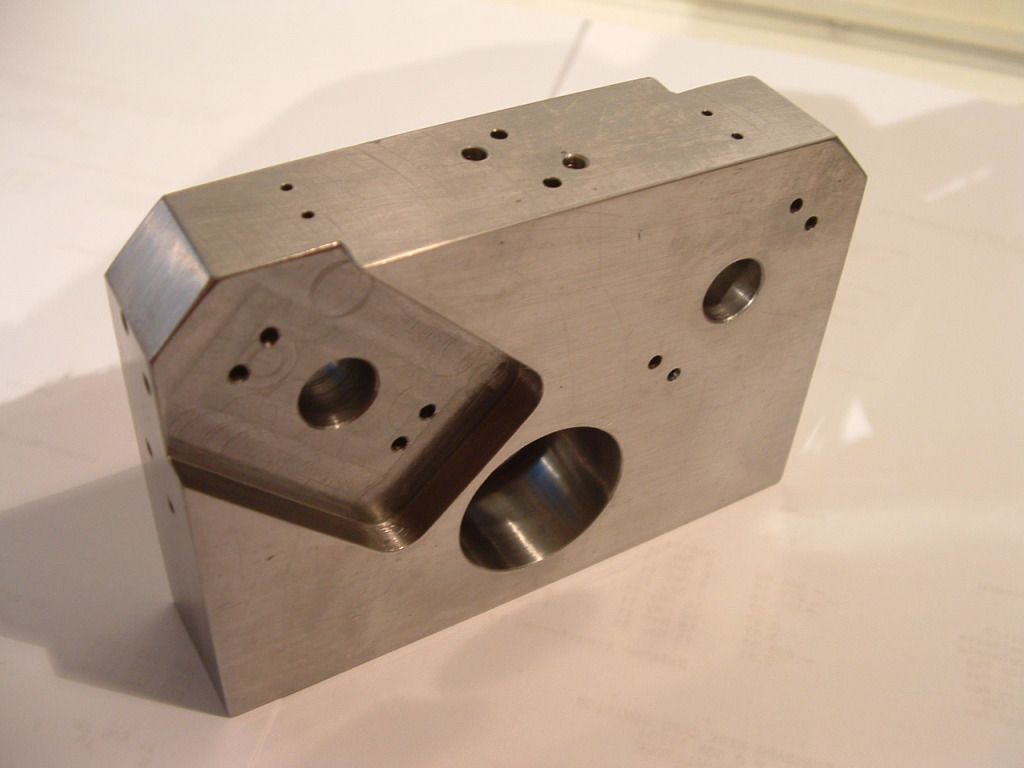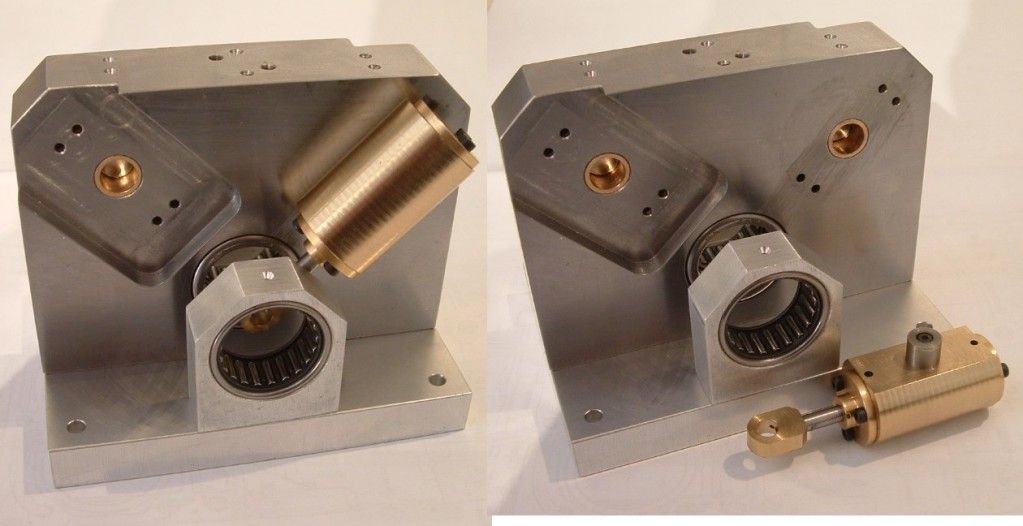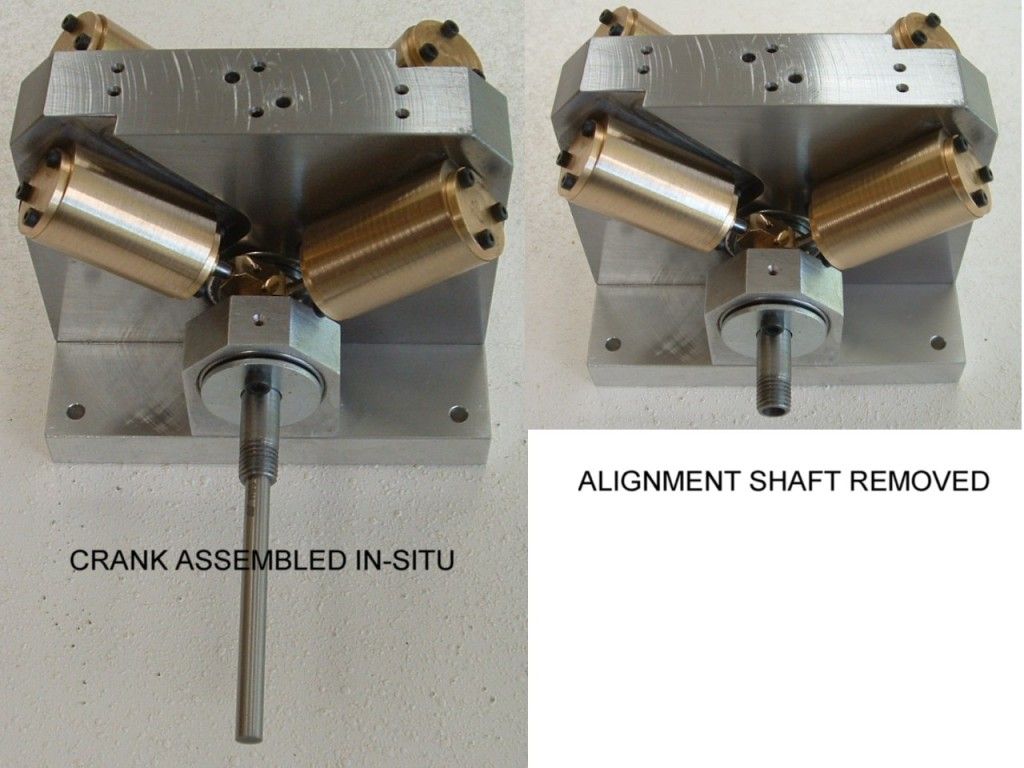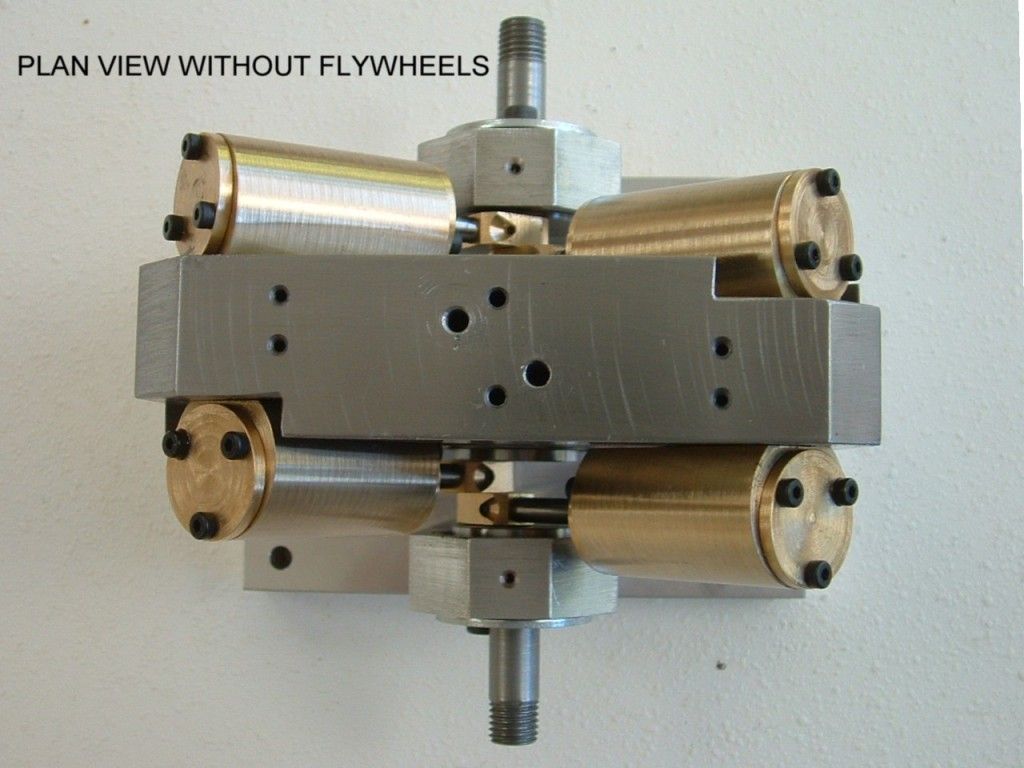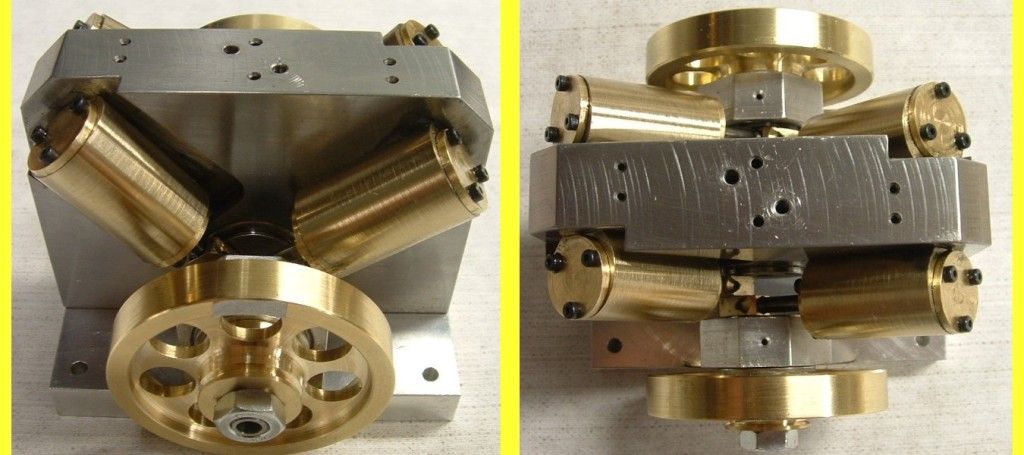Based on an idea by Spuddevans - I designed a V4 Wobbler using rare earth magnets to secure the cylinders.
It is 10mm bore 15mm stroke - 4 cylinders double acting - the cylinders are at 90° and run in pairs on common journals, the journals are 135° apart so I should get 8 equispaced power strokes per revolution which will allow it to run smooth and slow.
Finally started cutting metal today and got the cylinders done.
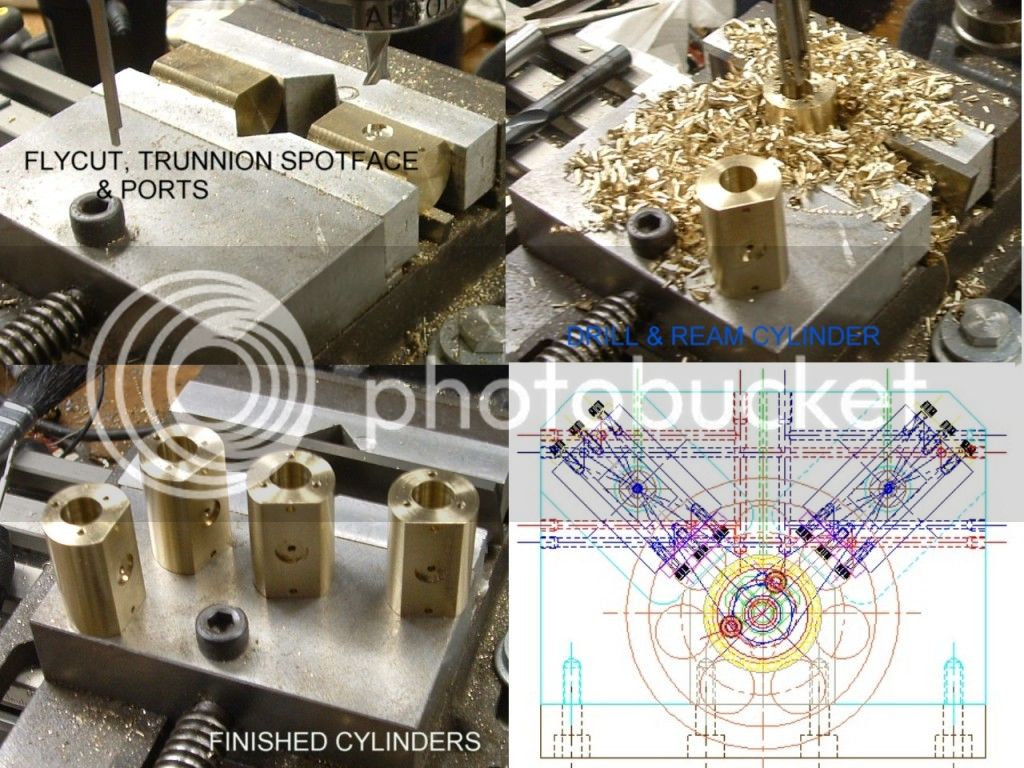
Ran it as a batch job relying on the V notch in my soft jaws to reliably pick up the part with good repeatability - seems to have worked fine.
I made the cylinders out of Ally-Bronze - the minimill didn't much like the 9.5mm drill - but the reaming went fine.
I will post the plans once I'm sure there are no fatal flaws in the design.
Regards,
Ken
It is 10mm bore 15mm stroke - 4 cylinders double acting - the cylinders are at 90° and run in pairs on common journals, the journals are 135° apart so I should get 8 equispaced power strokes per revolution which will allow it to run smooth and slow.
Finally started cutting metal today and got the cylinders done.

Ran it as a batch job relying on the V notch in my soft jaws to reliably pick up the part with good repeatability - seems to have worked fine.
I made the cylinders out of Ally-Bronze - the minimill didn't much like the 9.5mm drill - but the reaming went fine.
I will post the plans once I'm sure there are no fatal flaws in the design.
Regards,
Ken





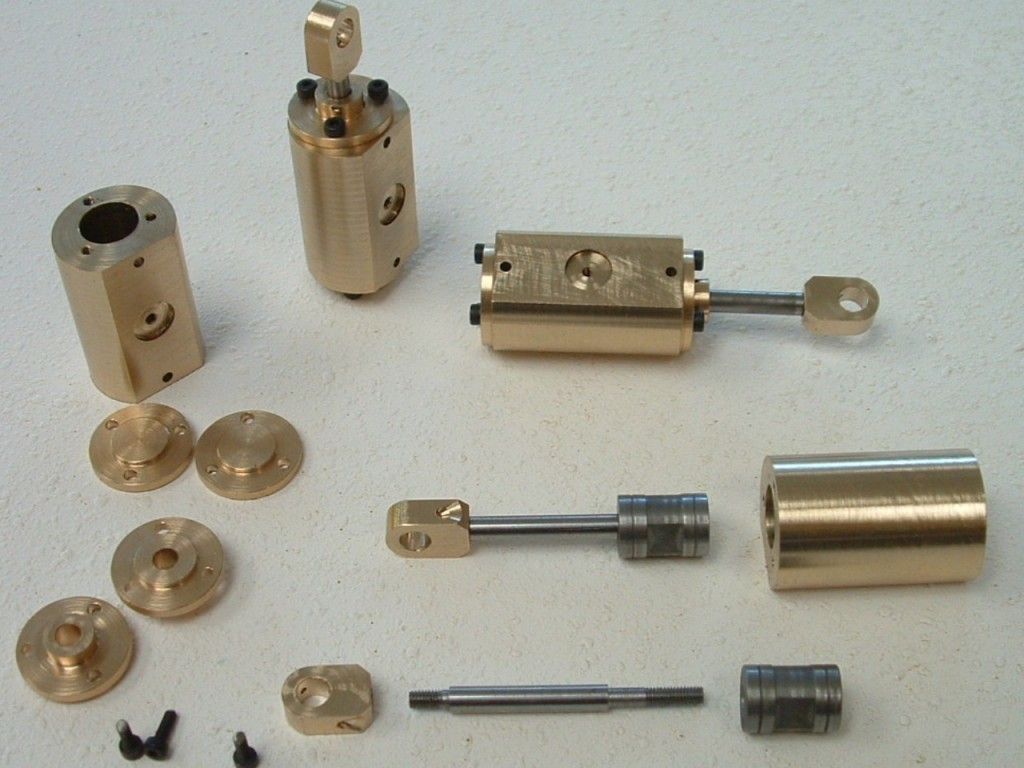
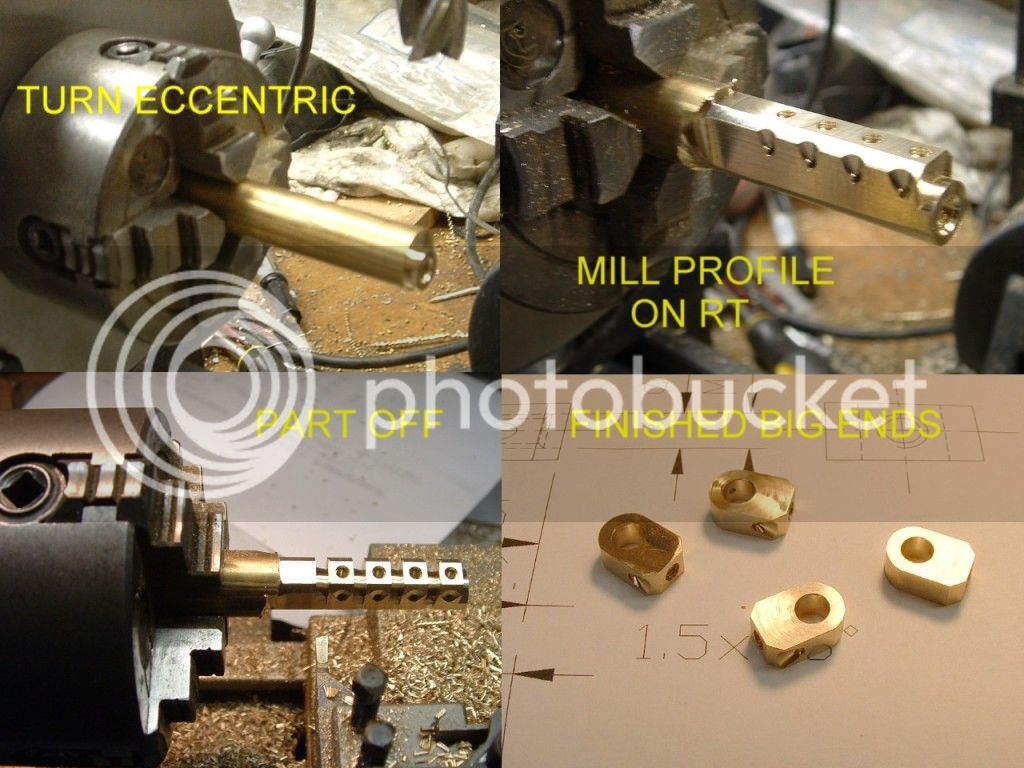





![DreamPlan Home Design and Landscaping Software Free for Windows [PC Download]](https://m.media-amazon.com/images/I/51kvZH2dVLL._SL500_.jpg)
























































